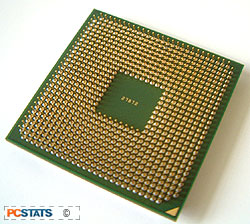It
seems as if AMD may again be hampered by the FABs. Low yields, and getting SOI (Silicon on Insulator) technology
down pat have put the K8 about a year off schedule. If the Athlon64 were released last
year around this time, as many had expected given the vast number of K8 motherboards on display
at Comdex 2002, it would have easily destroyed Intel's Pentium 4 in terms of performance. And that
would have been entering into the market at 1.4GHz.
However as the Athlon64 stands right now, it's certainly going to be an interesting fight
between the two, at least in the 32-bit arena.
 While we
unable to test the Athlon64 3200+ under a 64-bit OS, with 64-bit benchmarks, AMD's
own material suggests that the chip would far out perform both the Intel 3.2GHz, and
indeed even the Athlon64 3200+ itself under 32-bit applications.
While we
unable to test the Athlon64 3200+ under a 64-bit OS, with 64-bit benchmarks, AMD's
own material suggests that the chip would far out perform both the Intel 3.2GHz, and
indeed even the Athlon64 3200+ itself under 32-bit applications.
The Athlon64 3200+ has a real clock speed of
2.0GHz and as you can see from the picture above, looks similar to that of
a Pentium 4 processor, though is physically larger and heavier.
There are 754 pins on the
bottom of the processor and AMD has incorporated an integrated heat spreader to protect the fragile
silicon core. The IHS will certainly save us from any more horror stories crushed or
chipped cores. Unlike the Pentium 4 however, there is no hole on the top of
heat spreader to absorb copious amounts of thermal compound.
Weighing in at 105.9 million
transistors, the Athlon64/Athlon64 FX is easily the most complicated desktop processor in
the world. The AthlonXP Barton core had just 54.3 million transistors, and the Northwood Pentium
4 a paltry 55 million.
The processor is built at AMD's Dresden, Germany wafer
fabrication facility and uses 0.13 micron manufacturing technology. It is expected to move to
0.09micron process early in 2004. The Athlon64
runs at default voltage of 1.5V.
The silicon die of the processor measures 193mm2
squared, and about 50% of that is allocated to the large 1 MB L2 cache. While
we're not going to talk about this too much, it should be noted that all
Athlon64 based processors also have Intel's own SSE2 technology built into the
core.
